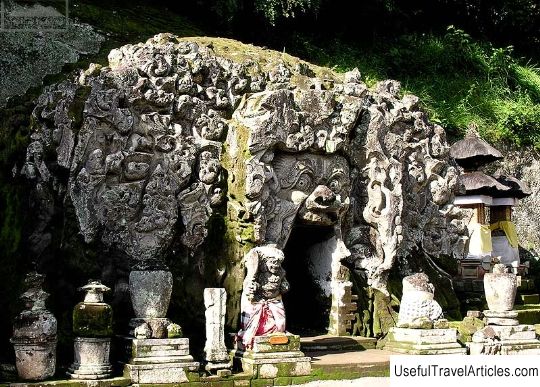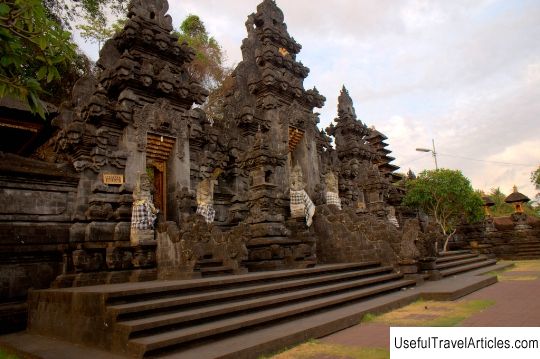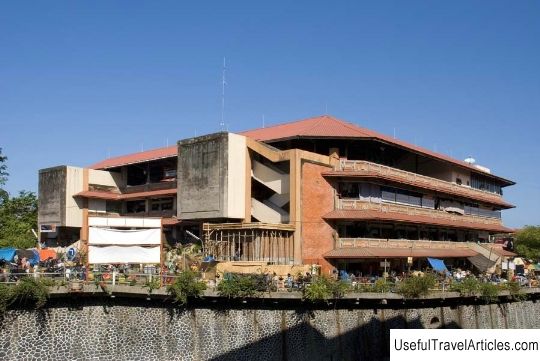Goa Gajah in Indonesia, Bali resort
Rating: 7,9/10 (6693 votes)  Goa Gajah is a place located near a small the village of Bedulu and one of the most mysterious in Bali. Goa Gajah translates as"Elephant Cave", but scientists know for certain that elephants never lived in this area. The history of Goa Gajah dates back to the 9th century: it is assumed that the passages in the rocks were dug by the Hindus, but on there are many Buddhist relics on the territory of the cave. The cave was probably used as a refuge and a sanctuary at the same time, and got its name from the skillfully a carved bas-relief depicting the head of a certain demon, which is also something resembles an elephant's head and is the entrance to a sacred place. The dimensions of Goa Gajah are quite small, at the same time it can fit no more than five people. Inside there are symbols of the god of well-being and wisdom of Ganesha - lingams, which are cylinders of black stone, and also a statue of the god himself, who is one of the most revered in the Hindu culture. Not far from the entrance there is a swimming pool, into which water flows from jugs held by two stone figures representing women. It is believed that ritual ablutions were performed in this place before meditation. Just below the cave there is a small waterfall and a river, through which is thrown by bizarre bridges overgrown with moss. The area is violent greenery and, in fact, is a kind of temple complex, the atmosphere which soothes and promotes solitude: in secluded corners, often you can see people praying or meditating. Goa Buddhists and Hindus Gajah is considered a place of power that can strengthen faith and give strength to all coming here with good intentions. The remains of a stone crayfish, which was once located right in the middle of the river next to the preserved to is still a small platform for prayers. Goa Gajah is a unique place where Hinduism and Buddhism are two great religions and cultures, and this amazing fact arouses the surprise and curiosity of scientists around the world. I wonder what the Elephant the cave was unknown to Europeans until the early 20th century, and most relics of interest were found by historical standards quite recently, in 1954, during archaeological excavations. Goa Gajah is real a storehouse of secrets and secrets, which more and more people are trying to solve all over the world. Not so long ago, UNESCO became interested in the Elephant Cave, therefore it is possible that Goa Gajah will soon join the World Heritage List.     We also recommend reading Waterstroke in Indonesia, Bali Resort Topic: Goa Gajah in Indonesia, Bali resort. |




